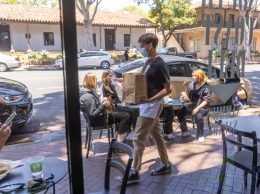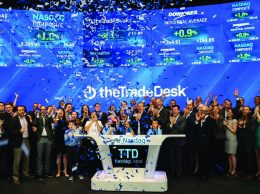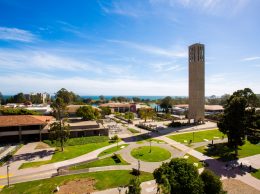
Henry Dubroff
Just one year ago, LinkedIn made history on the Central Coast when it created the region’s first unicorn, buying Lynda.com for $1.5 billion.
Now LinkedIn is selling itself to Microsoft for $26 billion, or an estimated 79 times operating earnings, in what Bloomberg and the New York Times DealBook column describe as one of the most expensive deals in the history of the Internet.
To hear the top brass at both companies tell it, things will be fabulous — a view I don’t exactly share. So, with a nod to the goofy wisdom of “listicles” that pop up every day in my “news feed,” here are eight things you are going to “love” about this combination.
• All that effort you put into clever repartee and insightful comments with your LinkedIn connections will now belong to Bill Gates and company. And your contacts. Unless you can afford to pay your IP lawyers more than Microsoft can, your data and all of your best insights will now belong to the overlords from Seattle. Like the Hotel California, you can check out but you can never leave.
• Think about what happens when Microsoft’s analytics and web search protocols extend far beyond your LinkedIn network. They’ll be delivering a barrage of all sorts of advertising for stuff you don’t need across all of the Microsoft platforms you use, anywhere you use them. It will guide your searches, too. Fascinating. And, by clicking, you’ll help Microsoft pay for the deal.
• Buying LinkedIn gives Microsoft the ability to create its own ecosystem much like Apple and to a lesser extent Facebook and Google. Perhaps Microsoft needed that kind of reach to survive — it was not going to get there with Bing. My guess is that over time less and less of your stuff will cross easily from one system to another as each adopts its own encryption and other protocols. Does the term “border security” ring a bell?
• This deal is a lot about old people. Young people move easily from Instagram to Snapchat to whatever is next. We’re the ones who find things we like and adapt to them — heck, I’ll confess to still having an AOL email address. We’re also the ones who like using Office and who are driving a lot of the LinkedIn traffic as we simultaneously hunt for professional colleagues and college girlfriends. Feel tech savvy or just ready for a nap?
• Transformative Internet deals are not always what they appear to be. Remember AOL-Time Warner? The $160 billion deal led to one of the biggest write downs in history and AOL is now part of Verizon, picked up for a mere $4.4 billion. For a more recent example, how about Hewlett-Packard’s big hookup with Compaq computer, a job killer that led to the recent breakup of HP into separate companies? Then there’s Rupert Murdoch’s disastrous dalliance with social media when News Corp. bought MySpace to attract a younger audience.
• Accounting gimmickry is alive and well. While companies on the Central Coast felt some collateral heat from the recent Securities and Exchange Commission warning about overusing non-standard accounting, that warning was really aimed at companies like LinkedIn. The company has a history of “turning losses into gains,” reports the Dealbook column, by stripping out stock-based compensation. Heavy issuance of stock options is one reason why the company’s shares fell by half after one weak earnings report.
• The broken tax system is figuring into the financing of this deal. Microsoft will borrow heavily in the U.S. to pay for the transaction even though it has $100 billion in cash sitting in accounts with banks that are making loans. The reason is that the money was earned overseas and can’t be “repatriated” without a hefty tax bill.
• LinkedIn is really about talent and talent development — internally and externally. But what happens to the talent at LinkedIn when the stock options stop coming, the most talented folks get cashed out and the juicy stock option compensation goes away? That’s really the $26 billion question.
• Reach Editor Henry Dubroff at hdubroff@pacbiztimes.com.






 Print
Print Email
Email

















